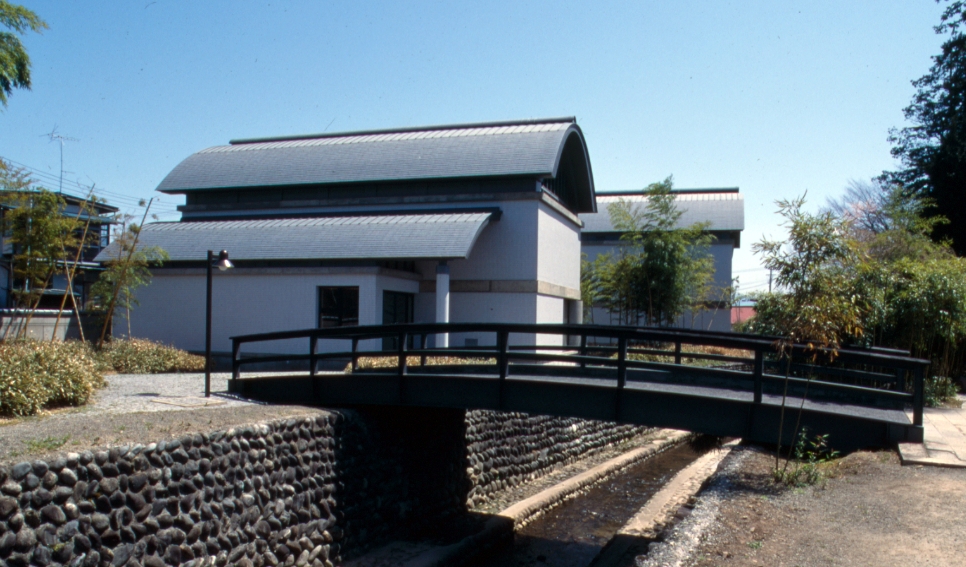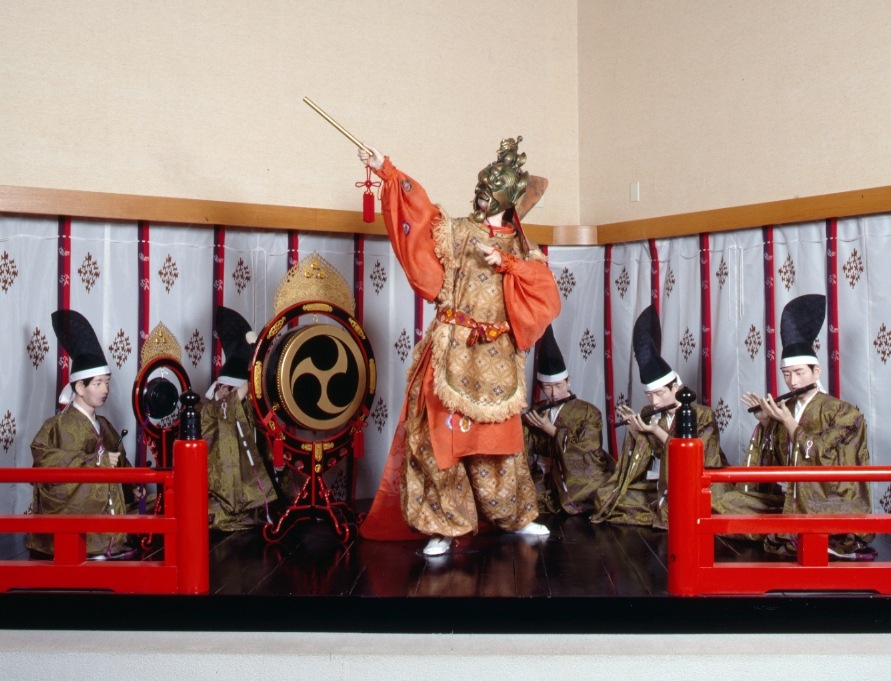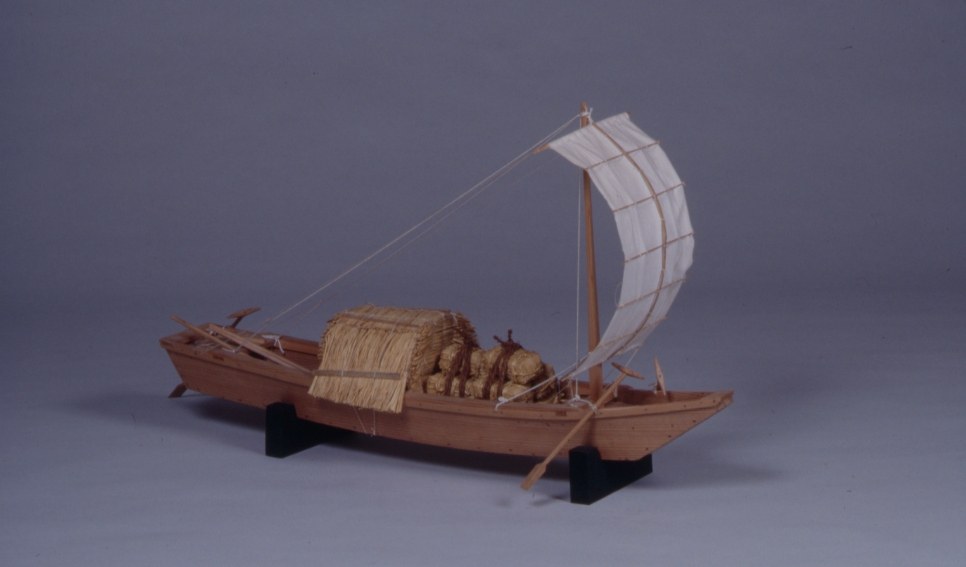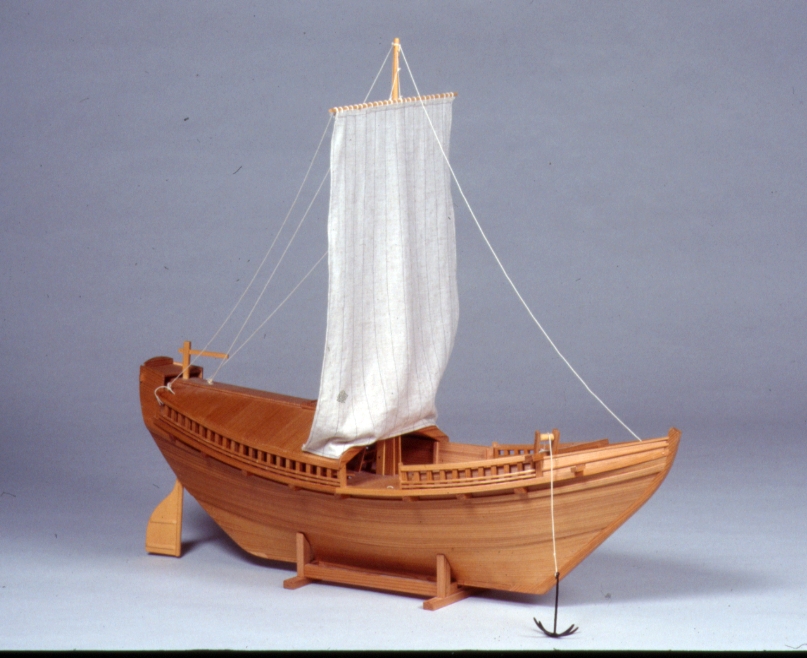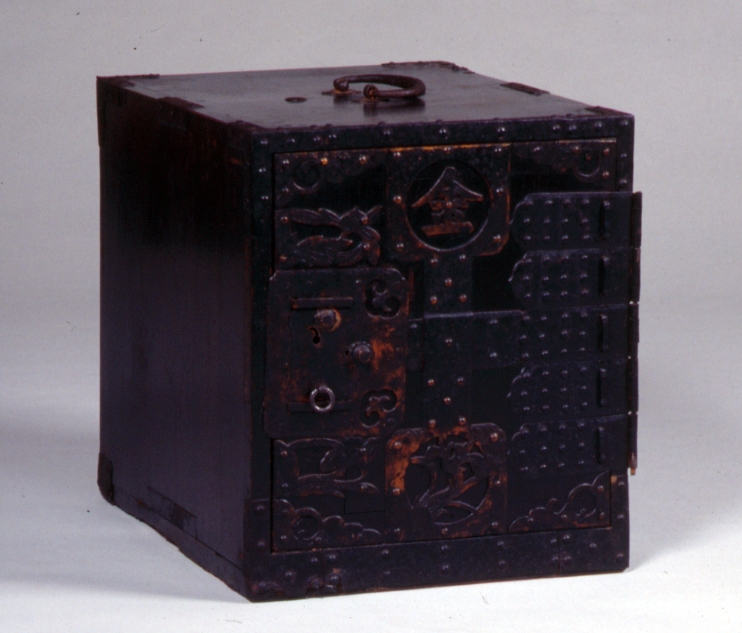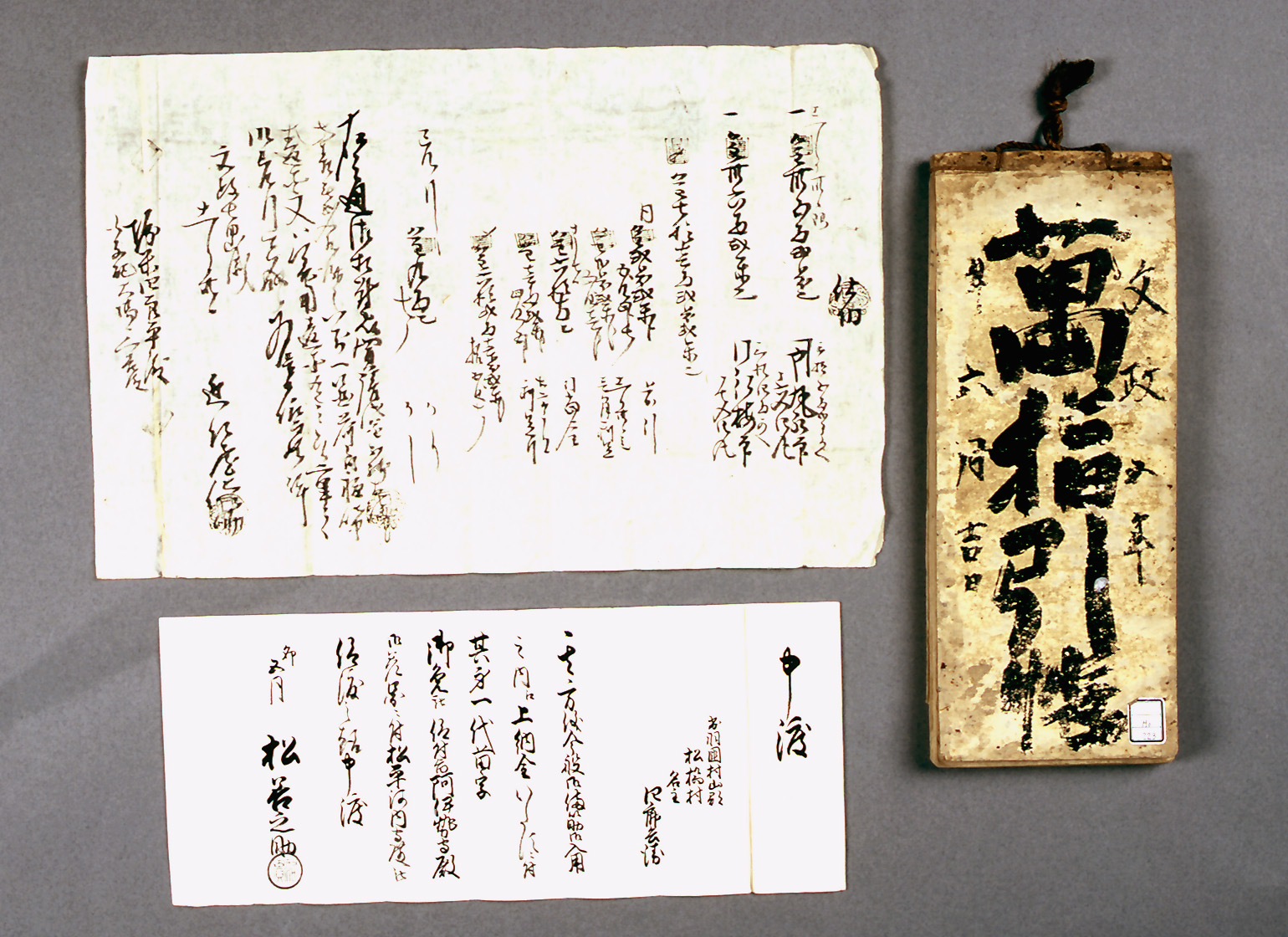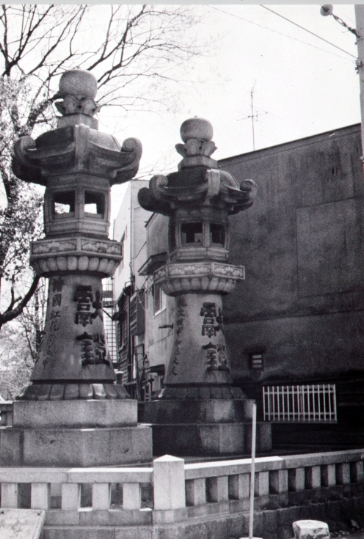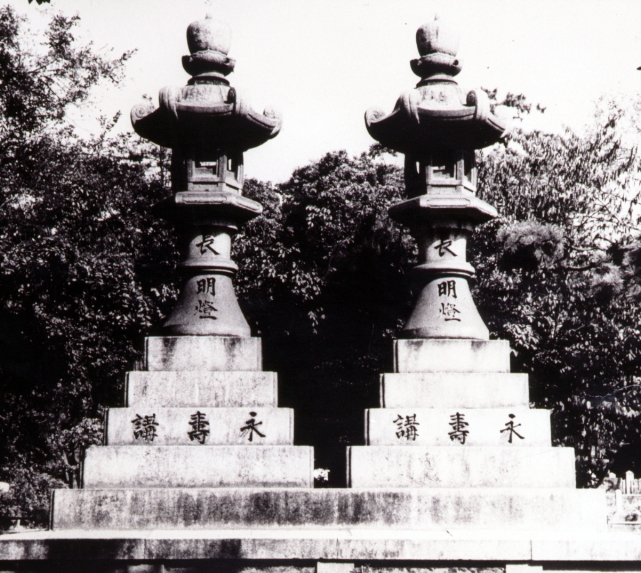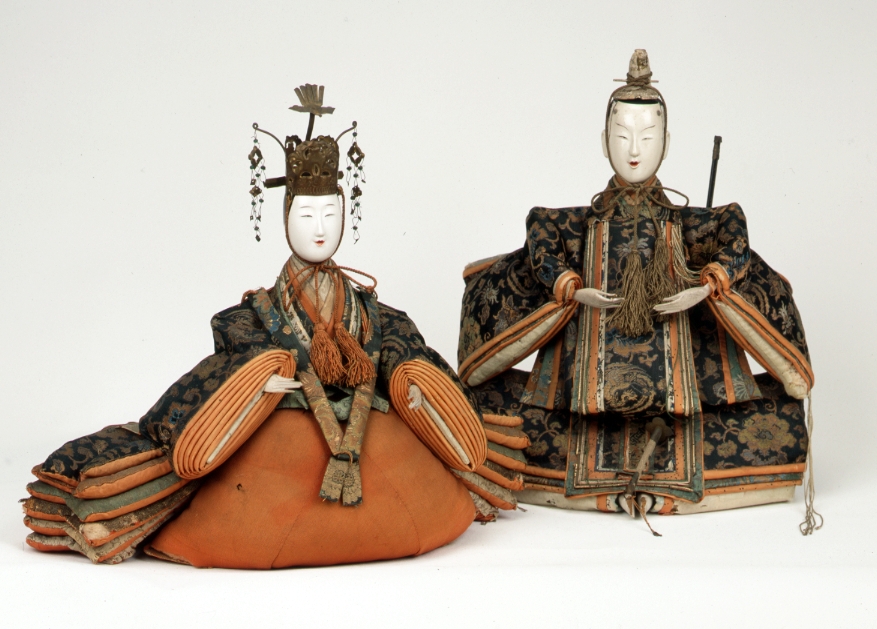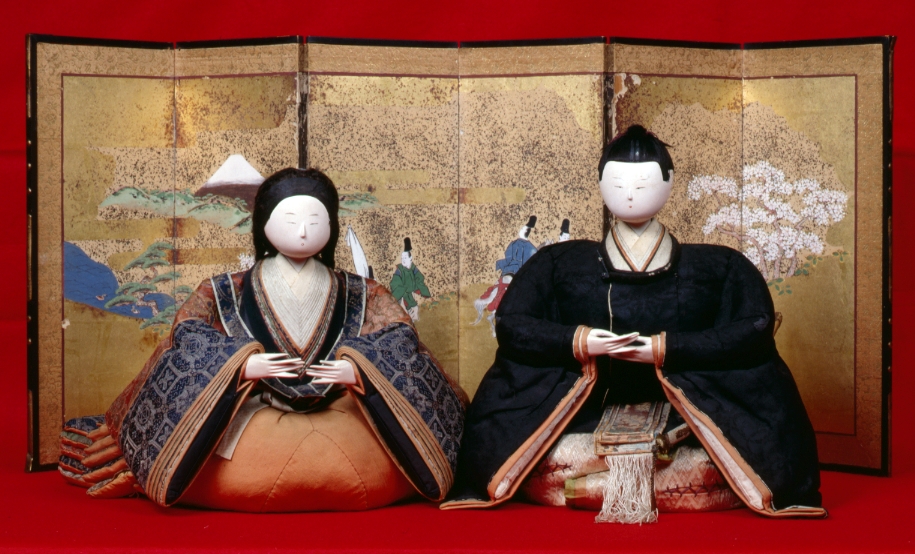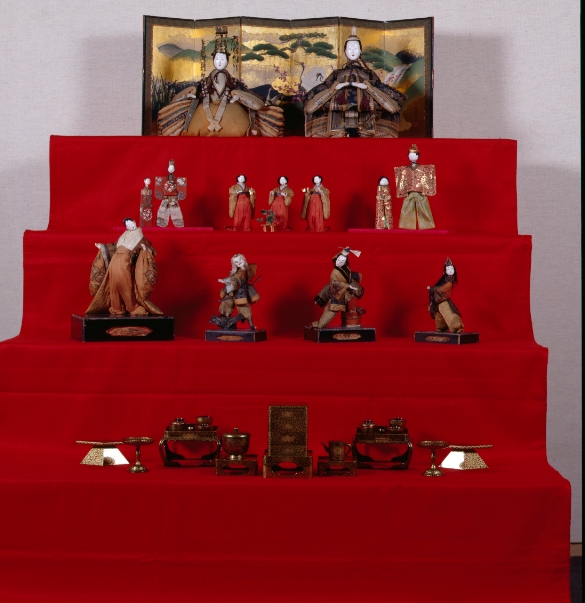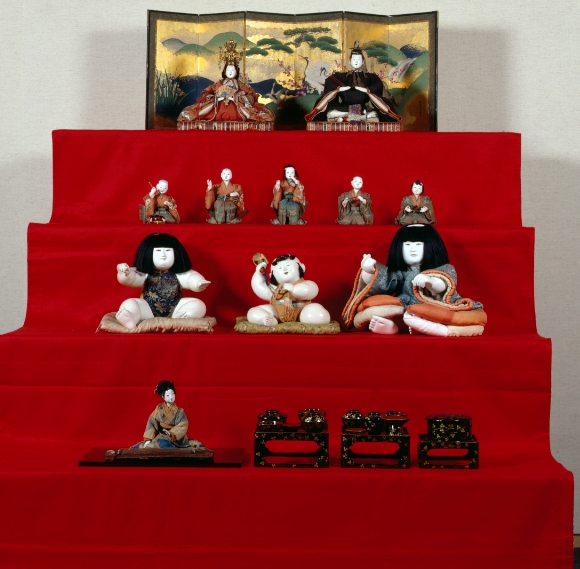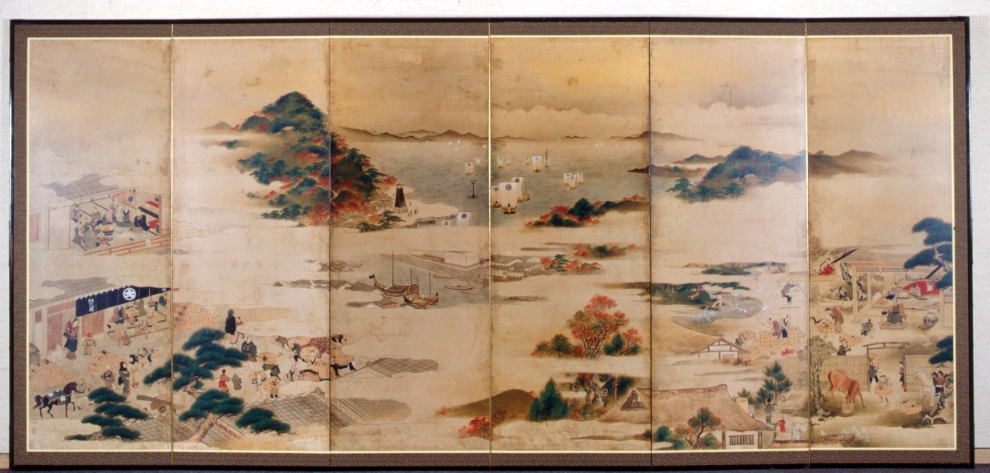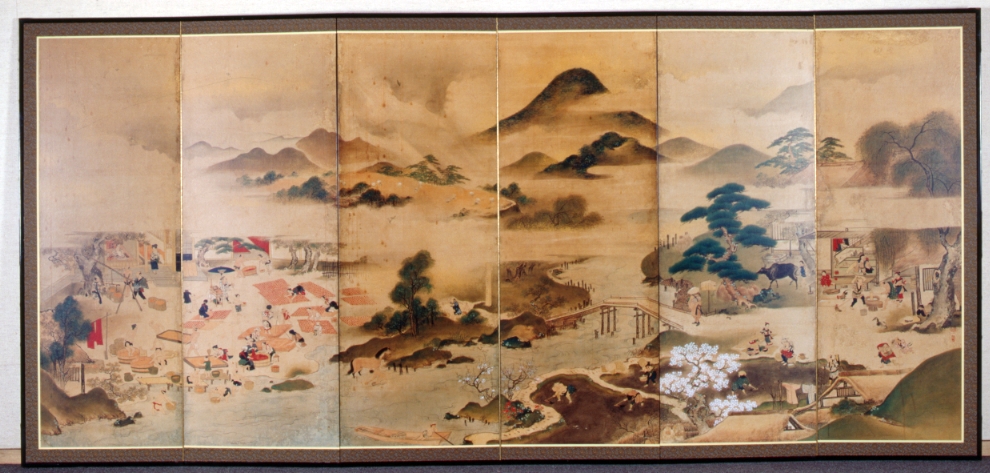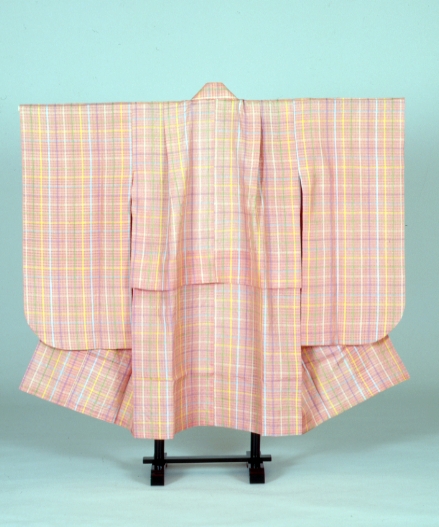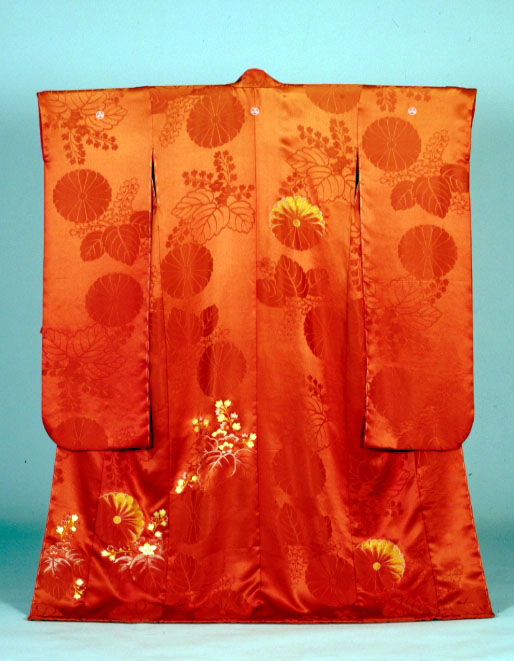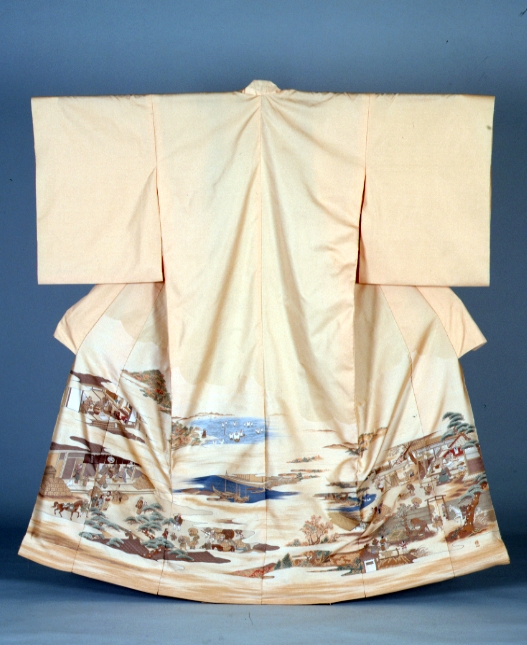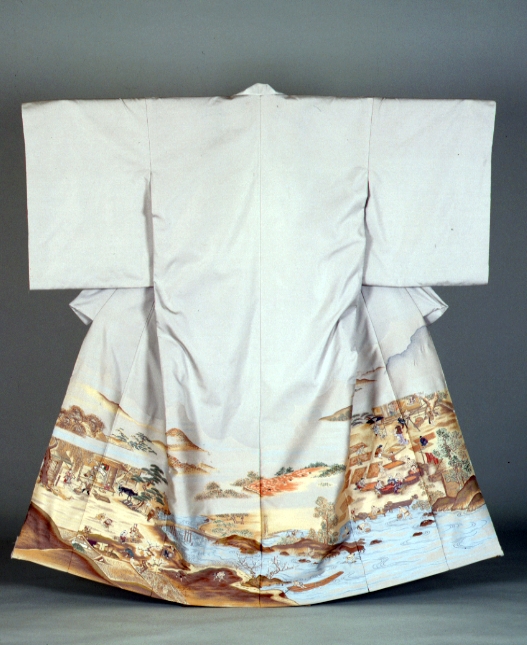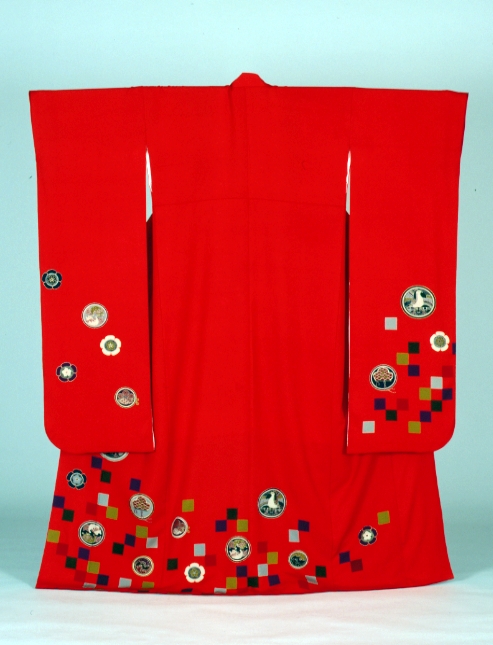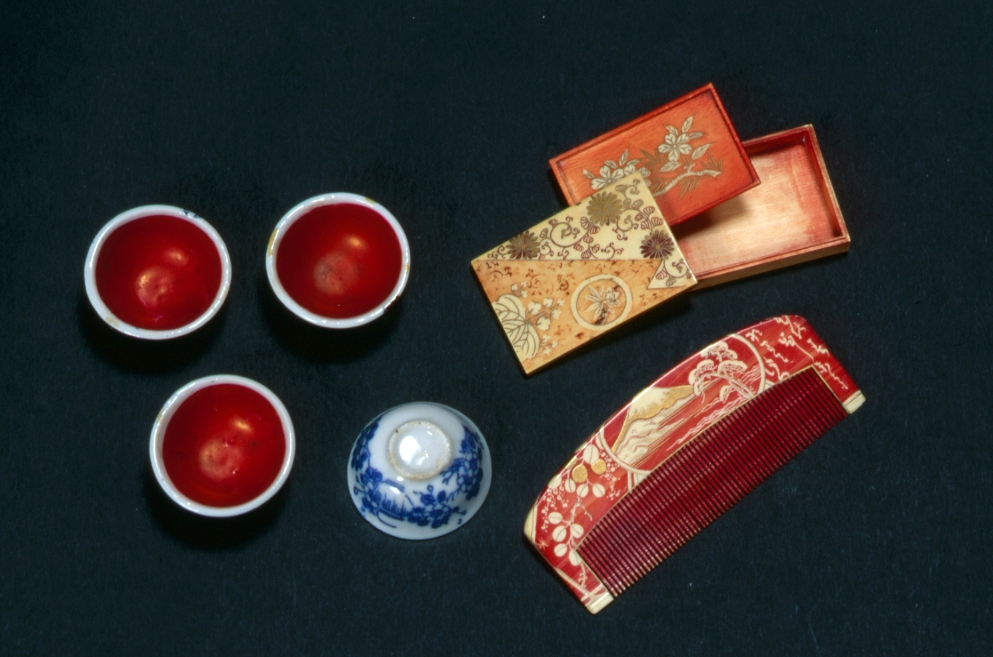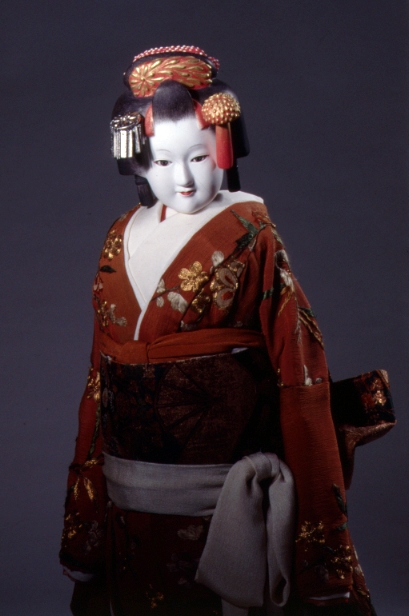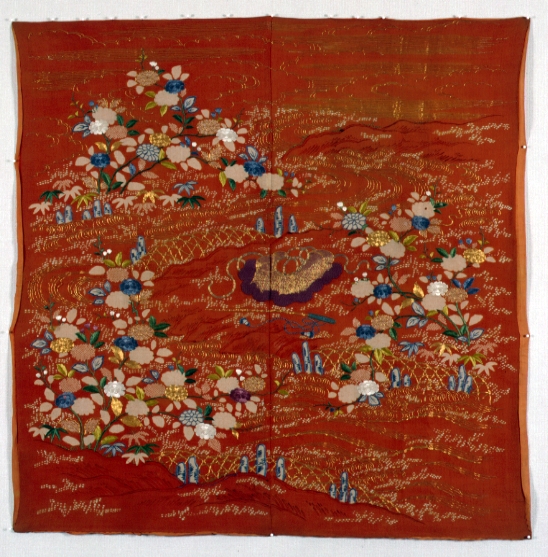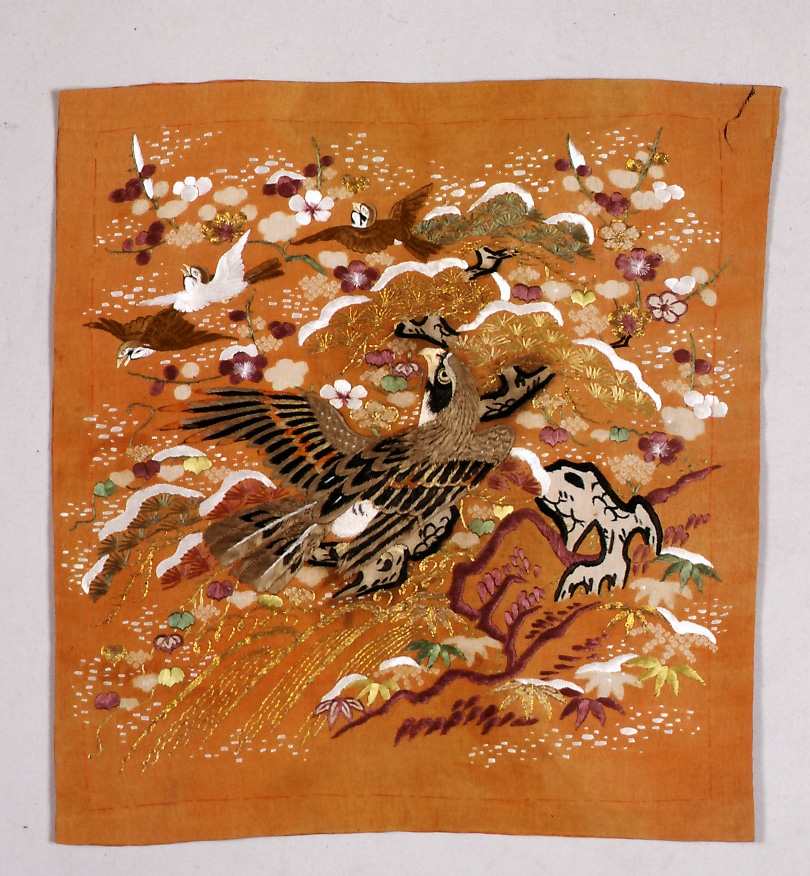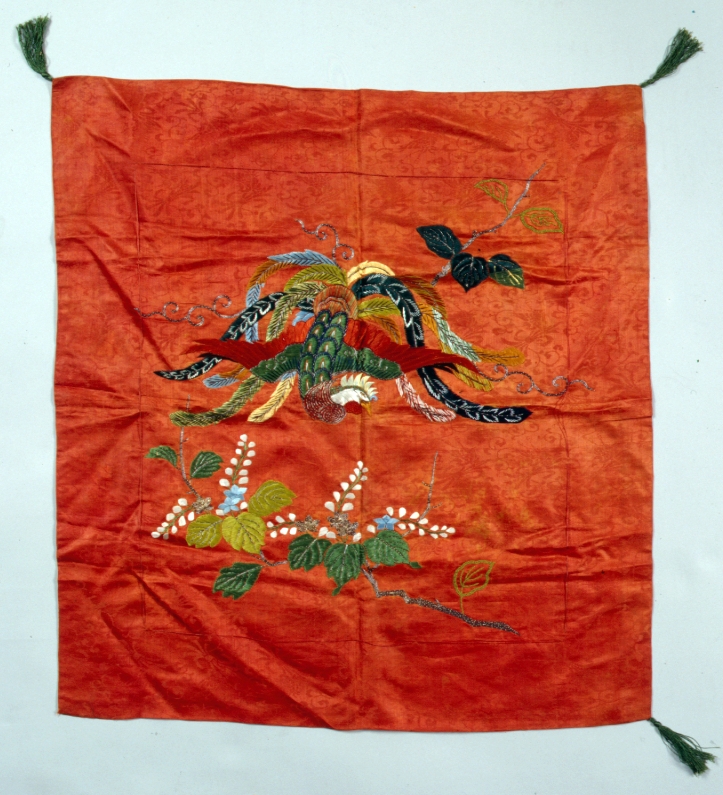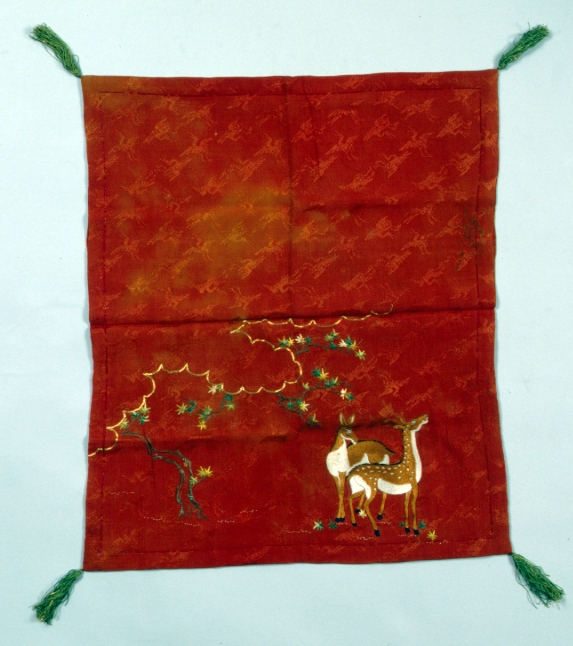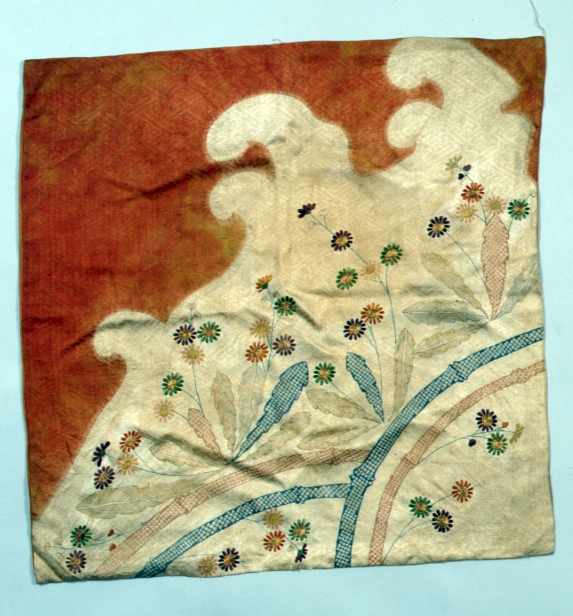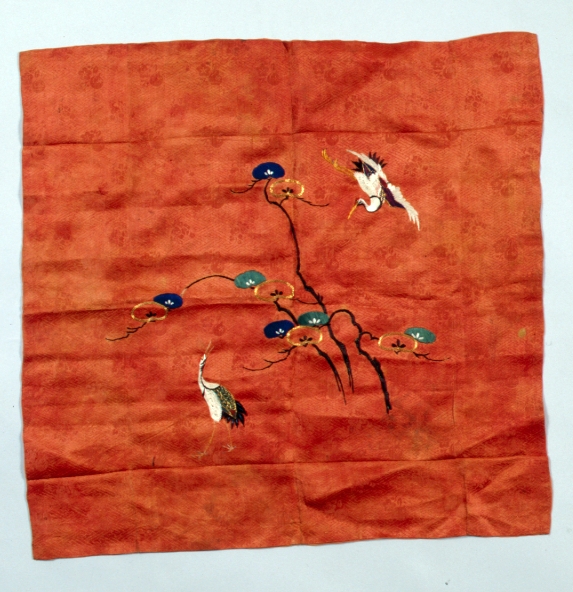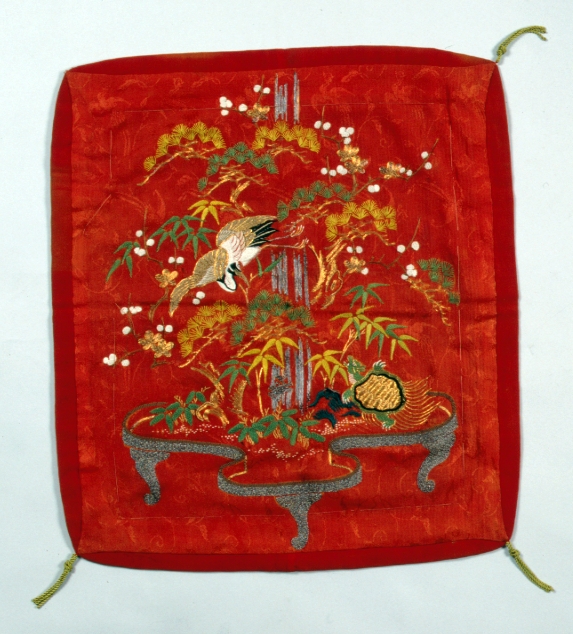The Benibana Museum (The Safflower Museum)
4. The Benibana House (紅の館)
(1) Hayashi-ke Bugaku (林家舞楽)
Hayashi-ke Bugaku was conveyed to this country in 860, when Risshakuji Temple (立石寺) was founded at Yamadera (山寺) and the dance shows the old magnificience. The dance of "Ryouou" (陵王) stems from the one paragraph of "The pleasure of Ryouou" (陵王の喜び), which is adopted from the old opera written by Kainichiou (戒日王) of India. The crimson color of the costume was dyed with benibana.
(2) Koukai-bune (model) (小鵜飼舟 <模型>)
The boat was innovated strong for the rapid river of the Mogami River (最上川) and the boats of this style was used for transporting of benibana and rice at the area of the Abukuma River (阿武隈川). It was operated by three men and its head was streamline-shaped so that it took the principal role of conveyance because of its speed.
(3) Kitamae-bune (model) (北前船 <模型>)
These cargo ships took a main role of conveyance at the Japan Sea from the middle of Edo period to the beginning of Meiji era. But when they didn't have a favourable wind, the ships needed many seamen to row.
(4) Funadansu (船箪笥)
This chest was made for the protection of fragil stuffs in a turbulence of a wild sea. Its corner and drawers were protected by an iron craft and its materials were zelkva (欅) outside and paulownia (桐) inside.
(5) Old Documents (古文書)
The benibana merchants of Yachi (谷地) spent money in collecting benibana and piled them up to Oishida (大石田) and shipped them up to Kyoto via Sakata. Many of the documents about benibana trading were preserved at the Horigomes.
(6) Benibana Stone Lanterns (紅花燈籠)
This stone lantern were dedicated to the Sumiyoshi Shrine (住吉大社) in Osaka in 1836 and has been called the "Benibana Stone Lanterns". They are 6.7 meters high and were made of granite.
(7) Choumei Stone Lanterns (長明燈)
These stone lanterns were dedicated to the Sumiyoshi Shrine in 1862 by twenty-two of benibana wholesaling merchants of Yamagata. They are 6.9 meters high and the whole of the figures gives something of magnificience.
(8) Ohinasama Dolls (お雛様)
The return ships from Kyoto brought back various things to the native area. "Ohinasama" was one of them so that many dolls were, even now, seen in these areas. On April 2nd and 3rd, every year, of a lunar calendar, they are prosperously exhibited in private houses. The parts of the costumes were dyed with benibana.
- Kyoho Dolles (Middle of Edo period) (享保雛 <江戸中期> )
An noble face and slant eyes make a character of mysterious Noh (能) masks. They wear very elegant and gorgeous costumes of gold brocade.
- Jirozaemon Dolls (Middle of Edo period) (次郎左衛門雛 <江戸中期> )
These dolls were designed by Jirozaemon, a doll maker of Kyoto and their faces are characteric of oval face, slant eyes and a hook nose. And their mouths are pretty.
- Male Doll's right, Female Doll's left
In the traditional way of old Japan, the position of the dolls is decided after the fashion of the Court. The Emperor sits facing to the south (天子南面) after this traditional manner. Therefore, in the Court, the male doll sit at the right side, the female doll at the left side. But the position was changed in 1928, when the Emperor Shouwa (昭和天皇) was acceded to the throne. The doll makers of Tokyo turned the position the other way.
(9) Benibana Holding Screen (Replica) (紅花屏風<複製>)
This pairs of screens were painted by Eikou Aoyama (青山永耕 1814-79) who was born in Rokuta Village (六田村) of this prefecture and studied under Nakabashi Kanou Eishin (中橋狩野永真) in Edo. On the screen, the vivid figures of benibana trading are shown from planting and growing to its tradings. (The original is stored in the Yamadera Basho Memorial Hall.)
(10) Costumes Dyed with Benibana (紅染衣装)
A lot of benibana was shipped for the dyeing materials from Mogami area (now Murayama area) to Kyoto and there the magnificent costumes were manufactured. In return, the costumes were brought back to the native area of benibana.
(11) Benibana Costumes Today
The benibana dyeing was fading away by the prevalence of chemical dyes, but at present it revives as a traditional magnificent costumes.
Two parts of construction to show the production to its currency by Eikou Aoyama - "Benibana Holding Screen", which is designated as a tangible cultural property of Yamagata Prefecture.
This costume was used at the 47th National Athletic Meeting - "Benibana Athletic Meeting" held in Yamagata Prefecture in 1992.
(12) Makeup (化粧)
In old days, "beni" was used as cosmetic for face and lips. Since Genbun (元文) age, it was used in a special occasion and usually powder was put on the face. "Beni" was only used to paint lips. About Tenmei (天明) age, "Tsuya-beni" (艶紅) and Sasa-beni (笹紅), which shines like a jewel beetle, were in fashion, but they were fade away by the end of Edo period. "Kyo-beni" (京紅) was producted around Kyoto and the ladies put it on the plate and pick it up with the third finger. They put (painted) it at the edges of eyes (Mebiki 目弾き) or on nails (Tsumabeni 爪紅) and its painting was thick at the center of underlip and faint on both edges of lips.
(13) Uchishiki (打敷)
"Uchishiki" is usually a tapestry. Since Heian era, its material was the sprit cloth of a gorgeous Japanese brocade and a diagonal cloth. It became to decorate up and down of furnishings. It usually was manufactured for daily furniture to show the dynasty cultures, and the sense of the court ladies natured such a beautiful decoration.
(14) Crape Wrapper (袱紗)
The cloth is used at the tea ceremony to clean up tea things and to appreciate the tea utensils of the guests. "Dashifukusa" (出し袱紗) is also used to serve a thick tea and then the cloth of brocade, figured satin, wool are highly praised.
